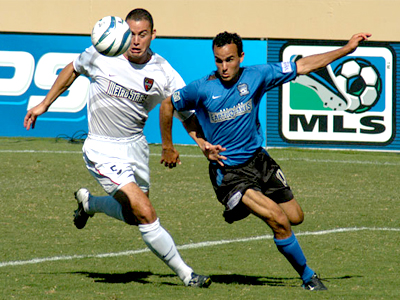
The San Jose Earthquakes (4-1-1, 13 pts.) are hosting the Real Salt Lake (5-2-0, 15 pts.) tonight at 7:30 pm at Buck Shaw Stadium in Santa Clara, California.
The Quakes have experienced two straight home loses against the RSL at Buck Shaw Stadium, in 2010 (3-0) and 2011 (1-0). All-time scoring San Jose 14, Real Salt Lake 20.
The team that currently plays its games at Buck Shaw Stadium in Santa Clara is not the same team that started as The Clash in the MLS in 1996.



